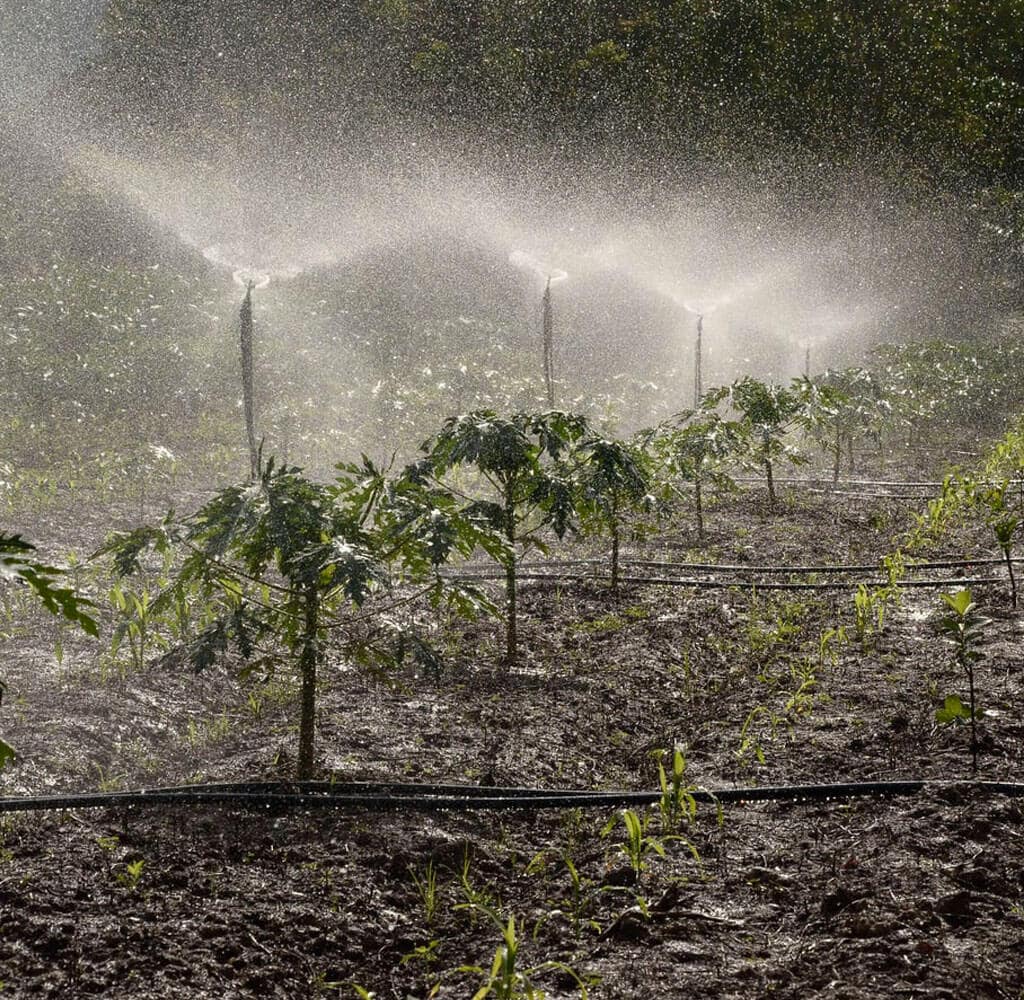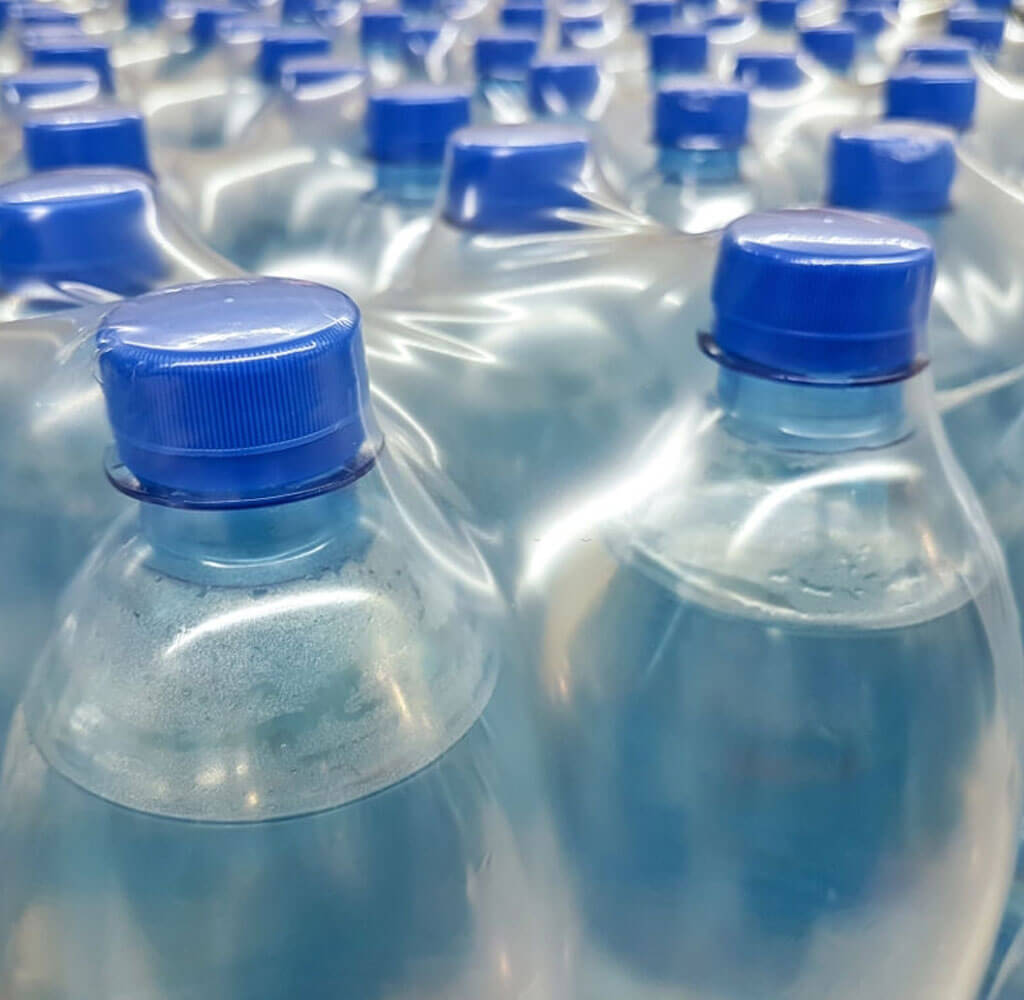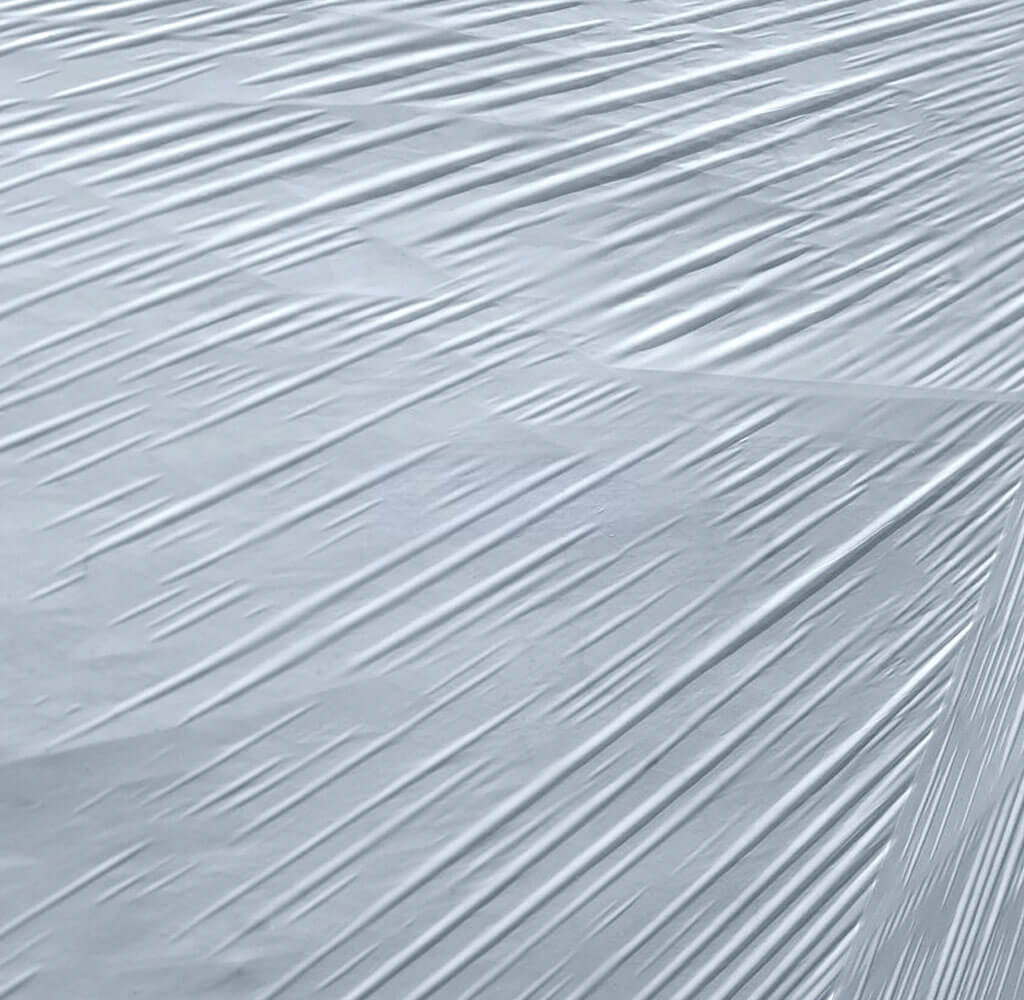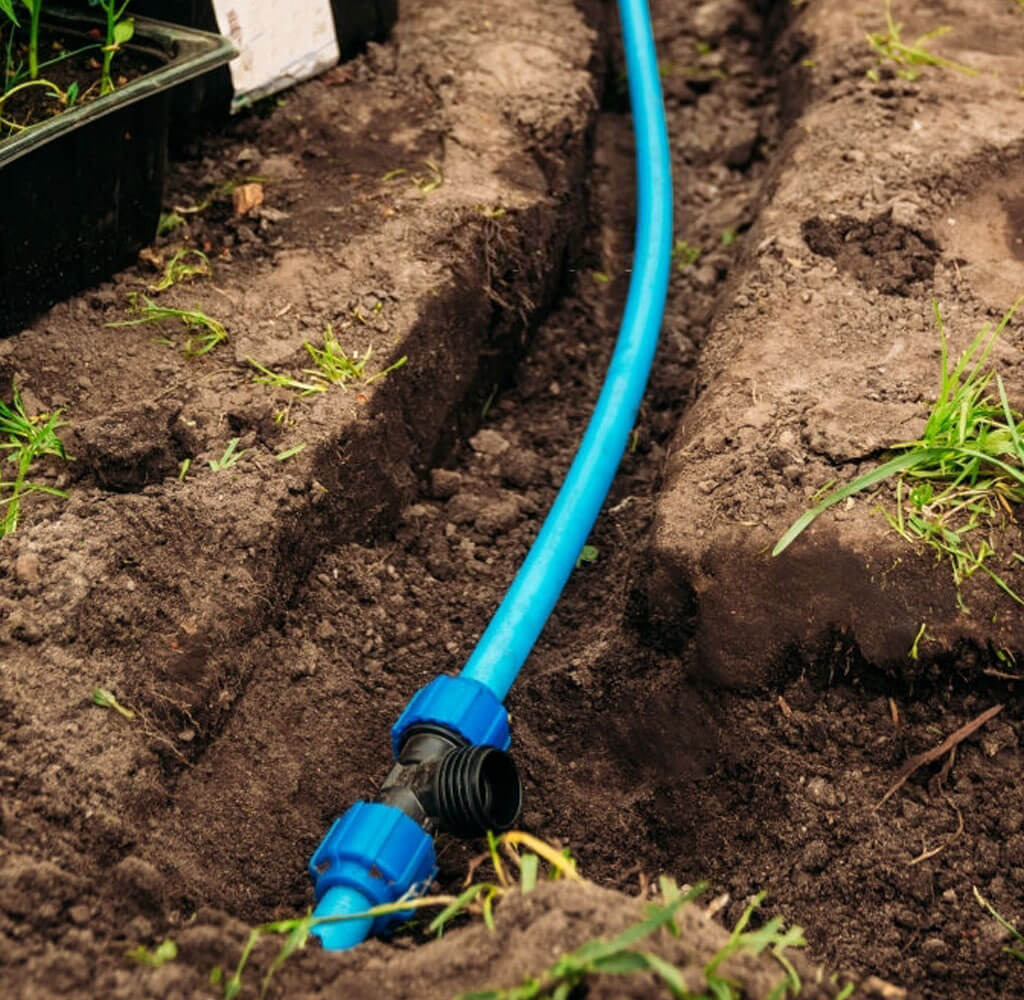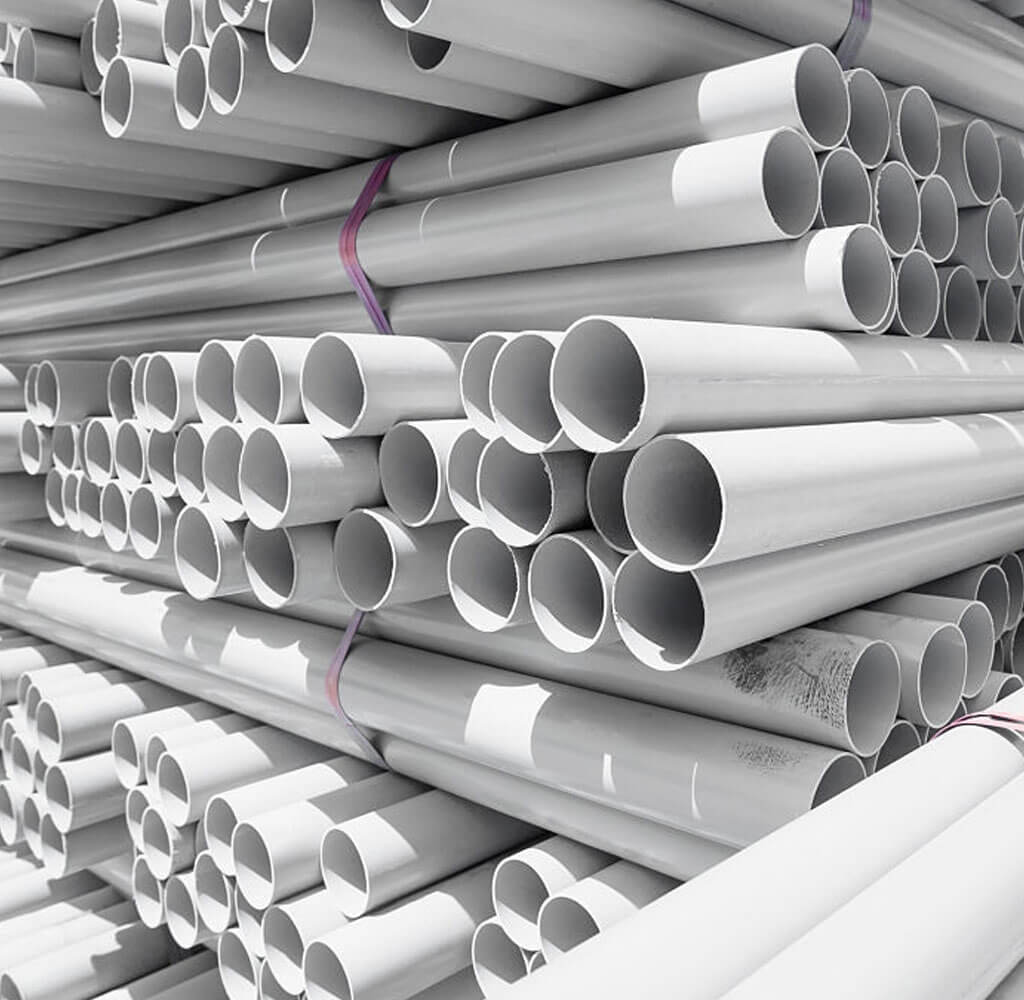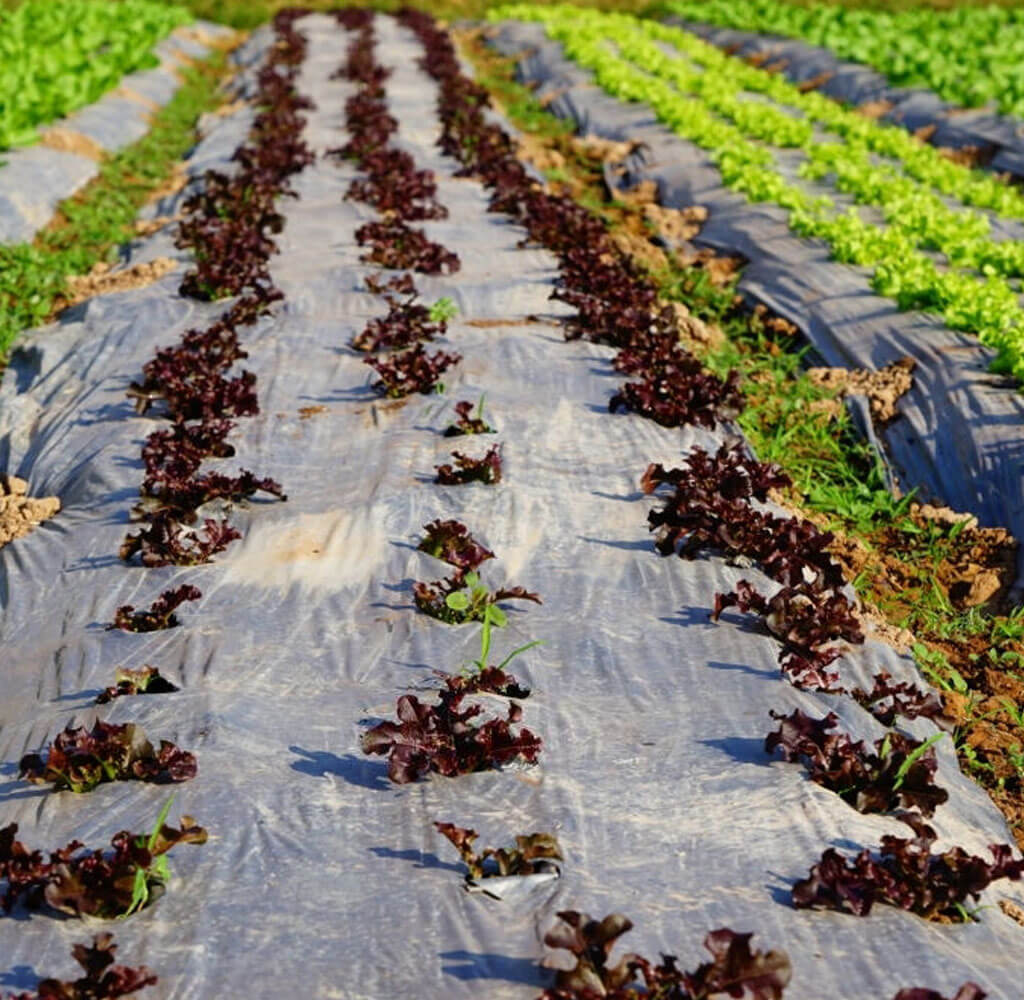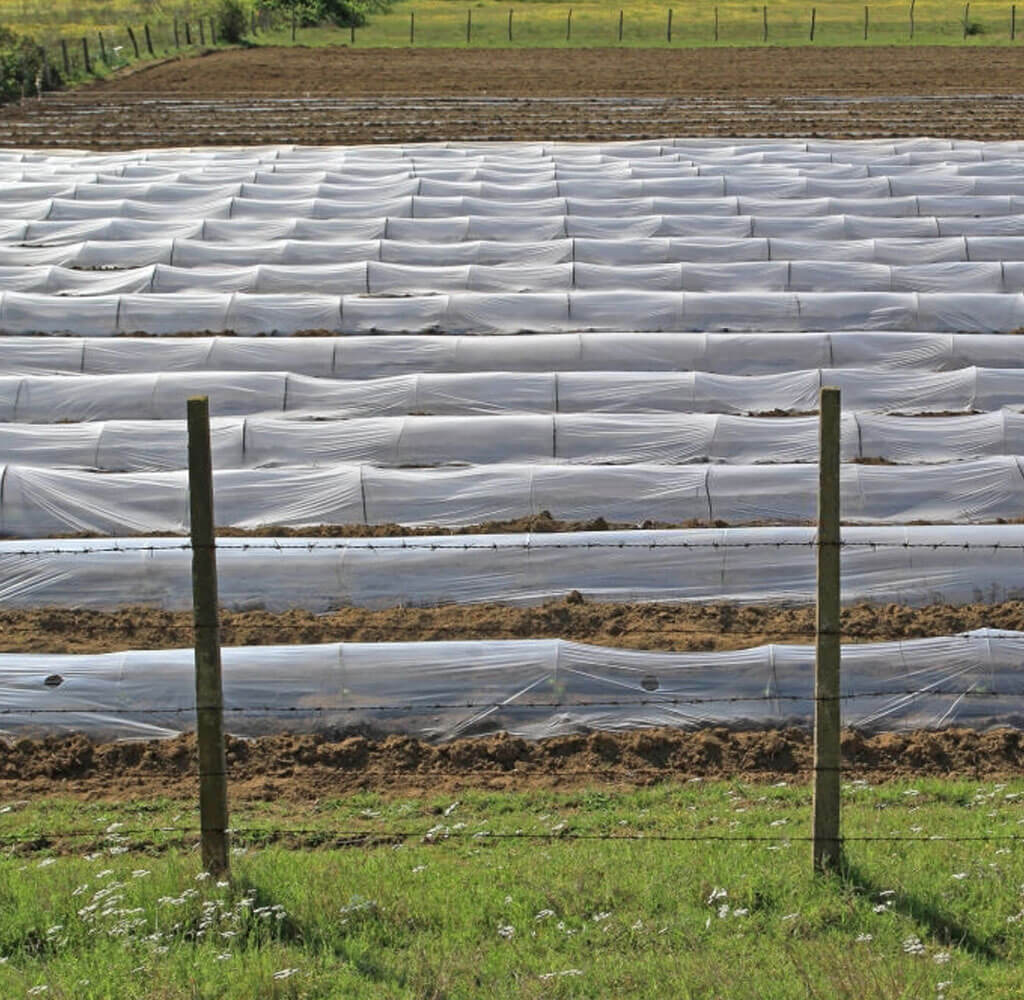Mulch Film
Overview
Mulching is the process or practice of covering the soil/ground to make more favourable conditions for plant growth, development, and efficient crop production. Mulch technical term means ‘covering of soil’. While natural mulches such as leaf, straw, dead leaves and compost have been used for centuries, during the last 60 years the advent of synthetic materials has altered the methods and benefits of mulching. The research as well as field data available on effect of synthetic mulches make a vast volume of useful literature. When compared to other mulches plastic mulches are completely impermeable to water; it therefore prevents direct evaporation of moisture from the soil and thus limits the water losses and soil erosion over the surface. In this manner it plays a positive role in water conservation. The suppression of evaporation also has a supplementary effect; it prevents the rise of water containing salt, which is important in countries with high salt content water resources.Advantages
- It is completely impermeable to water.
- It prevents the direct evaporation of moisture form the soil and thus limits the water losses and conserves moisture.
- By evaporation suppression, it prevents the rise of water containing salts.
- Mulch can facilitate fertilizer placement and reduce the loss of plant nutrients through leaching.
- Mulches can also provide a barrier to soil pathogens.
- The opaque part of mulch prevents germination of annual weeds from receiving light.
- The reflective part of mulch repels certain insects.
- Mulches maintain a warm temperature even during nighttime which enables seeds to germinate quickly and for young plants to rapidly establish a strong root growth system.
Cost Economic Of Mulching
To find out and explain the actual cost benefits of using “Shantilex Mulch Film”, our team has conducted an experiment for the Bhendi crop in the year 2008. A typical calculation has been given for working out the cost economics of mulching in the Bhendi crop.Assumptions made in cost estimation
Power and source of water are available. “Shantilex Film” is assumed to last for 2 seasons only. However, in practice, the film should well last longer than two seasons, if handled properly, in that case, savings will definitely be correspondingly larger.Technical data
-
Product ID40005720
-
CRI>80Ra
-
Lumen4050-4500LM
-
Imput Power50W
-
Viewing Angle120 Degree
-
Warranty Time5 Years
-
LED BrandEPISTAR
-
Imput Power50W
-
Waterproof RatingIP65
-
Operating Temperature-20°C TO 45 °C
-
HousingAluminum(ADC12)+PC
-
CertificatesCE, RoHS, NSF
Hi-Res Images
Product Certification
Excepteur sint occaecat cupidatat non proident, sunt in culpa qui officia deserunt mollit id laborum voluptatem.
-
16W Downlight Fixture TD-EPlastic/ABS178x178x70mm1200-1320 Lm40005725
-
20W Downlight Fixture TD-FAluminum alloy205x205x75mm2000-2200 Lm40005724
-
24W Downlight Fixture TD-FAluminum alloy205x205x75mm2000-2200 Lm40005723
-
22W Downlight Fixture TD-BAluminum alloy205x205x75mm2000-2200 Lm40005721
-
16W Downlight Fixture TD-EPlastic/ABS178x178x70mm1200-1320 Lm40005722
-
20W Downlight Fixture TD-FAluminum alloy205x205x75mm2000-2200 Lm40005720
-
16W Downlight Fixture TD-DAluminum alloy205x205x75mm2000-2200 Lm40005719



